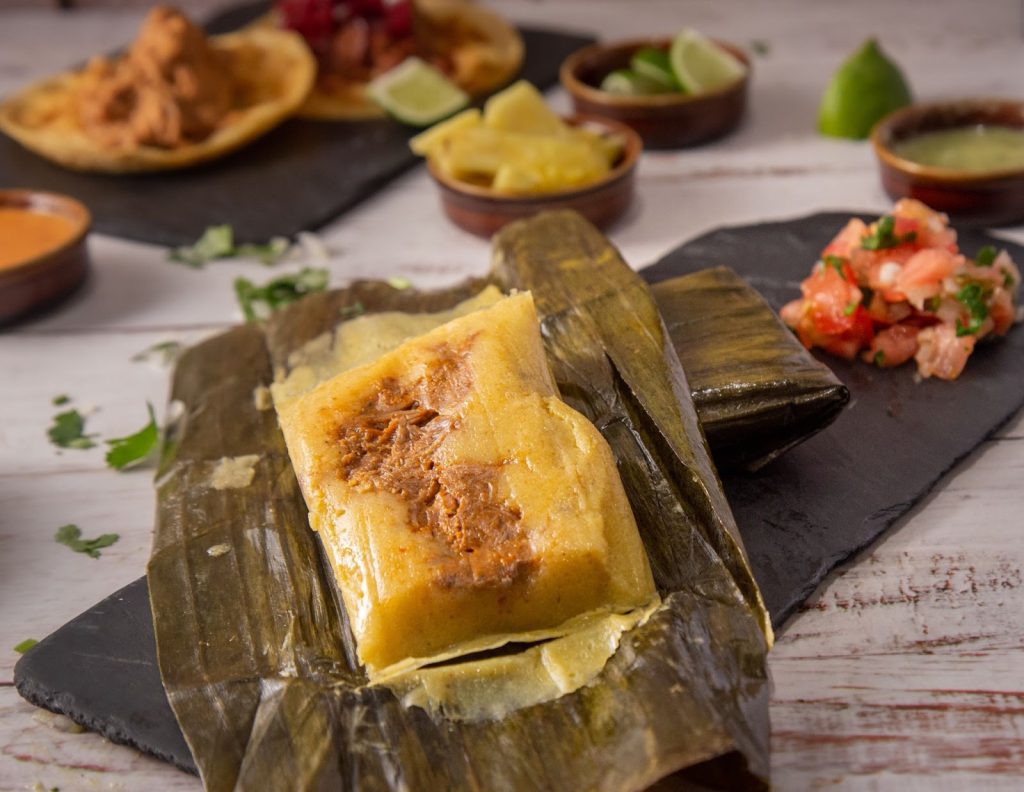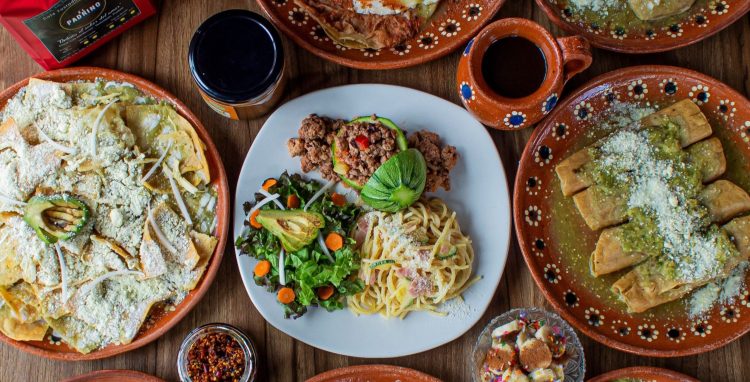Oaxaca’s Rise to the Top of Global Food Rankings
In 2024, something remarkable happened in the world of gastronomy. Oaxaca, once seen as Mexico’s quiet cultural capital, officially overtook Mexico City in multiple international food rankings, including the prestigious “Global Gourmet Index” and Michelin’s “Emerging Regions Spotlight.” It wasn’t a fluke or a media trend—it was the culmination of years of quiet mastery, cultural depth, and community-centered culinary innovation. While Mexico City continues to dazzle with its cosmopolitan flair and high-end dining, Oaxaca has become the soulful beating heart of Mexican food. And food travelers are taking notice.
The tipping point came in early 2024 when several Oaxaca establishments were highlighted in the Michelin Guide’s regional review—an unprecedented nod to the region’s chefs, farmers, mezcaleros, and home cooks. Mole tastings, once limited to market stalls and family kitchens, are now served with curated mezcal pairings at both street-side counters and refined tasting rooms. The city’s food scene has struck a rare balance: preserving ancestral flavor while welcoming thoughtful modernity.
What Makes Oaxacan Cuisine So Distinctive?
Unlike the metropolitan experimentation that characterizes much of Mexico City’s food scene, Oaxaca’s strength lies in its roots. The cuisine is deeply embedded in its indigenous heritage, with strong Zapotec and Mixtec influences that manifest in every ingredient, every cooking technique, every plate. The region boasts an unparalleled variety of chilies, herbs, heirloom corn, and cacao. Every dish tells a story—not just of flavor, but of resilience, identity, and place.
At the heart of Oaxacan cuisine is mole, a labor-intensive sauce that can include up to 30 ingredients and take days to prepare. While mole negro (dark mole) is the most famous, Oaxaca is home to at least seven classic mole varieties, each unique in its spice, sweetness, and texture. Visitors can now embark on dedicated mole tasting menus that showcase this spectrum, often paired with artisan mezcal flights distilled from rare wild agave species.
The tortillas served in Oaxaca are another example of culinary devotion. Made from hand-ground, nixtamalized native corn, their texture and flavor bear no resemblance to mass-produced varieties. Even the tlayuda—a giant, toasted corn disc topped with beans, cheese, meats, and salsa—has evolved from street snack to gourmet platform in the hands of local chefs.
The Surge of Culinary Tourism in Oaxaca
In 2024, Oaxaca became one of Latin America’s fastest-growing culinary tourism destinations, attracting not only chefs and food critics, but also curious eaters eager to learn. The growth hasn’t been driven by five-star hotels or international franchises but by immersive, locally-rooted experiences. Zapotec cooking classes, where participants grind corn on a metate and cook over a clay comal, have become a centerpiece of Oaxaca’s food tours. Tourists now line up not just for reservations, but for molcajetes and homemade chocolate tutorials.
Markets like Mercado de Benito Juárez and Mercado 20 de Noviembre are no longer quick photo stops—they are day-long itineraries. Guided food tours explain how each stand contributes to the region’s ecosystem, from the vendor of chapulines (spiced grasshoppers) to the tamale aunties with family recipes passed down for generations.
This surge is not about superficial trend-chasing. It’s a sign that travelers want substance. Roamcox’s food-loving readers increasingly seek what Oaxaca offers in abundance: ingredients with terroir, recipes with history, and people who preserve culture through cooking.

How Oaxaca Overtook Mexico City in Rankings
It would be simplistic to frame Oaxaca’s culinary ascent as merely beating Mexico City. The capital remains a powerhouse, but Oaxaca has earned a different kind of respect: one built on depth rather than dazzle. Here are the key reasons why global rankings elevated it in 2024.
First, Oaxaca’s commitment to origin. Unlike the fusion-heavy plates dominating high-end Mexico City kitchens, Oaxaca celebrates where food comes from. Farm-to-table here isn’t a marketing slogan—it’s just the way it’s always been. Chefs work directly with local farmers, foragers, and fisherfolk. Menus change with the microseasons. This seasonal integrity has impressed Michelin reviewers, who noted Oaxaca’s “rare ability to connect story, sustainability, and sensory excellence.”
Second, Oaxaca’s culinary ecosystem thrives on inclusivity and preservation. Many of its rising stars are women—mothers and grandmothers who run comedores and tamalerías that double as culinary schools and community kitchens. Their food doesn’t just feed visitors; it keeps cultural memory alive. Some of the most lauded eateries of 2024, such as Alfonsina and Tierra del Sol, are collaborations between classically trained chefs and traditional cooks.
Third, mezcal has given Oaxaca an international platform unlike any other Mexican region. With global demand surging in 2024, more travelers are flying in specifically to visit small-batch palenques—family-run distilleries where agave is cooked in earth pits and mashed by horse-drawn tahona. Mezcal tastings have become a high art, and Oaxaca has taken the lead in setting sustainable, ethical standards for production. This attention to craft has only enhanced the culinary experience.
Oaxaca’s Culinary Scene as Cultural Preservation
Beyond accolades and tastings, what truly sets Oaxaca apart is the sense that every bite comes from somewhere meaningful. Food in Oaxaca is a ritual. It’s how people celebrate birth, mourn death, honor ancestors, and resist forgetting. With the 2024 resurgence of indigenous rights movements across Mexico, Oaxacan cuisine has also become a form of cultural pride and activism.
Dishes like caldo de piedra—stone soup prepared by riverbank in a Zapotec ceremony—or pan de muerto flavored with wild anise and orange zest aren’t tourist attractions. They’re symbols of continuity. Many chefs now serve these traditional meals alongside modern menus to ensure that as Oaxaca’s culinary fame rises, its cultural soul is not lost in the process.
Restaurants such as Criollo and Origen are leading this blend of preservation and innovation. They’re elevating pre-Hispanic cooking techniques without reducing them to spectacle. Food is plated with reverence, not gimmickry. Even Michelin, typically Eurocentric in its selections, acknowledged in 2024 that Oaxaca represents a “rare culinary maturity built on community stewardship.”
Planning a Culinary Trip to Oaxaca in 2025
For Roamcox readers considering a food-centered trip to Oaxaca, there’s no better time than now. High season runs from October to March, coinciding with harvest festivals and Dia de los Muertos. Book food tours in advance, especially those that include market walkthroughs, village cooking classes, and mezcal trail visits.
Don’t miss the small towns outside the city: Teotitlán del Valle for hand-woven textiles and goat barbacoa, San Bartolo Coyotepec for pottery and mole rojo, and Santiago Matatlán—the self-proclaimed world capital of mezcal.
Opt for boutique guesthouses or eco-lodges that partner with local artisans and cooks. Look for places that offer food demos or organize communal dinners with chefs in residence. These aren’t just lodging options—they’re entry points to the stories behind the flavors.
Lastly, come hungry not just for food, but for connection. Oaxaca doesn’t just feed your stomach; it rewires your sense of what travel, taste, and tradition can mean when fused together.
Conclusion: The New Capital of Mexican Cuisine
In 2024, Oaxaca didn’t just climb the rankings—it reshaped them. It proved that culinary greatness isn’t always about innovation in the modern sense. Sometimes, it’s about remembering. About protecting flavor from dilution. About giving credit to grandmothers, not just gastronomy schools.
For global food lovers, Oaxaca now stands not only as Mexico’s culinary capital but also as a global case study in how food, place, and culture can align beautifully. And for those still loyal to the chaos and charisma of Mexico City’s food scene, the message is clear: Oaxaca isn’t trying to compete. It’s just being itself—and that, perhaps, is the most delicious thing of all.





















